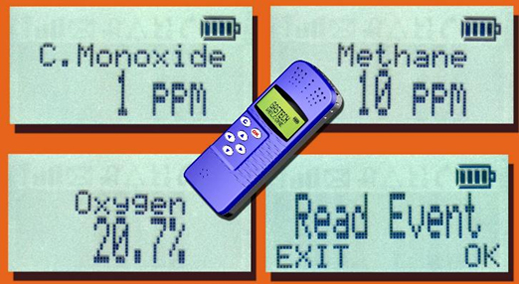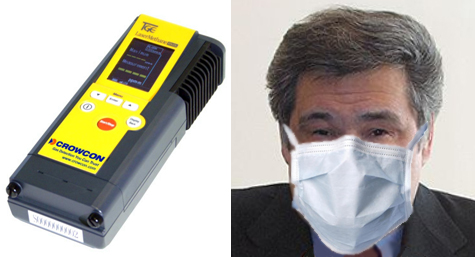
By John Helmer in Moscow
The death toll at the Raspadskaya Coal Company’s principal mine is 43 dead, 47 missing, and 7 in hospital in critical condition as of Tuesday morning, Moscow time.
The leading producer of coking coal in Russia suffered two methane explosions overnight between Saturday and Sunday. The first was late on Saturday evening, and the second about four hours later, during a rescue attempt. All 19 rescuers in the mine at the time of the second blast have been reported killed. Underground ventilation had been halted by the blast, diminishing the chances of survival for those who were trapped below surface. Airflow has reportedly been restored today, but the underground water level is rising.
With output of 13.6 million tonnes of coking coal (raw) in 2009, Raspadskaya is the leading producer in the country; its volume accounts for 17% of total coking coal mined in Russia last year. The affected mine accounts for 8.9 million tonnes, or about 65% of Raspadskaya’s deliveries to steelmills and export clients. A secondary underground mine, MUK-96, produced 1.9 mt last year, while the open-pit mine of Razrez Raspadsky produced 2.8 mt.
Almost three-quarters of the company’s output was sold to the domestic market last year and in the first quarter of this year. Evraz’s West Siberian Metallurgical Combine (Zapsib) is 100% dependent on coking coal concentrate supplies from Raspadskaya; 78% of supplies to Evraz’s Novokuznetsk steel mill and 33% of supplies to Evraz’s Nizhny Tagil mill come from Raspadskaya. Alexander Agureyev, the Evraz spokesman, did not respond to questions about Evraz’s estimate of the tonnage of deliveries it expects to lose, and the replacement supply options.
Magnitogorsk and Novolipetsk are less dependent, drawing 19% of their supplies from Raspadskaya. Arcelor-Mittal’s Krivoy Rog (Krivyi Rih) mill in Ukraine and Posco Korea are major buyers of Raspdadskaya’s export volumes.
A report by Troika Dialog steel analyst Sergei Donskoy forecasts a one to two-month shutdown of the mine, and slow recovery of output until the fourth quarter “at the earliest…The accident should worsen the supply/demand situation on the domestic coking coal market, leading to a deficit of high-vol[atile] coking coal. Speaking of the impact on other coal players, we note that Mechel is unlikely to gain a lot in terms of additional demand, as it mainly produces low-vol[atile] blends that cannot be used as a substitute for coal supplied by Raspadskaya Coal.”
Marat Gabitov, metals analyst at Unicredit Securities in Moscow, said “The mine could be closed for 1-6 months, in our opinion. The two Russian mines that saw the largest explosions over the last 75 years Yubileinaya and Ulyanovskaya (owned by YuzhKuzbassUgol) were closed for 5.5 and 6.5 months, respectively. We note that in both cases their post-explosion recovery was managed by current Raspadskaya CEO Gennady Kozovoy.”
Uralsib Bank reports today to clients that even if the mine shutdown lasts for just one month, and added capacity can be drawn from the open-pit mine and MUK-96, “repair works taking several months could cause a significant domestic coking-coal deficit, as Raspadskaya contributed 18% total Russian coking coal output (10% from the Raspadskaya mine) in 2009. This could add significant support to the coking-coal price in 3Q10, as was the case in 2007 when Evraz’s Yuzhkuzbassugol suffered several methane explosions.”
Three years ago, two mines in the Yuzhkuzbassugol (YKU) group, also in the Kemerovo region and wholly owned by Evraz, suffered methane explosion accidents. The first, at YKU’s Ulyanovskaya mine in March of 2007, killed 110 miners, a record toll for a Russian mine disaster. Then in May of the same year, a methane explosion at the Yubileinaya mine, caused 38 fatalities. Early this year, YKU was cleared by the mine safety regulator Rostekhnadzor (RTN) to reopen the Esaulskaya mine, after a methane accident on January 20 led to a court-ordered closure on January 25. The Esaulskaya accident was a fire ignited by methane concentration above the regulated safety level; although 68 miners were in the area of the methane ignition, none was hurt.
On enforcing work safety and pollution controls, the Kemerovo governor, Aman Tuleyev — currently the Kremlin’s nominee for a 4th term as governor (see image below) — has been famously close to the metal and coal company owners. He has announced that for methane security Raspadskaya is one of the best technically equipped coalmines, not only in Russia but also in the world. At the time of the first explosion, Interfax has reported the Deputy Director General of Raspadskaya, Vladimir Goryachkin, as saying that readings were normal.
After the YKU methane blast in March of 2007, Russian coal miners’ union sources described the practice of masking the methane detectors in mine shafts in order to prevent them activating shutdowns as methane levels rise to ignition levels. The pressure to do this came from management, the miners said, who claimed that this was one of the ways miners were obliged to work to lift output levels.

Ruben Badalov, first deputy chairman of the Coal Miners’ Union of Russia, told CRU Steel News: “Theoretically the sensors could be malfunctioning. But you should note that sensors control certain spots in the mine, and they check the working process, not the situation in the coal strata. They could fail to detect a sudden buildup of methane, and I tend to believe it really was a buildup. The sensors are set to trigger when the concentration reaches 1% to 2%, and the substance burns only at the 4% concentration, so the sensors have quite a big safety margin.”
“There could be negligence. However, we know Raspadskaya as a mine with disciplined and responsible management, and advanced equipment, too. We still can’t tell where the mistake occurred — was it a flaw of development technology, or a warning or maintenance mistake.”
Visiting Mezhdurechensk and speaking with the miners’ families, Prime Minister Vladimir Putin is reported to have said that careful analysis is required, especially of the methane detection systems. “These questions must be answered,” Putin said. “To perform a very detailed investigation into accident — this is not only for the bereaved families of miners and rescuers, it is necessary for us all. The situation at the mine, the actions of specific officials – we must study all this carefully. We need to know what led to such a large number of victims of the tragedy of such magnitude…” Putin’s remarks are the first time a Kremlin official has raised concerns about the way methane monitoring technology operates in Russian coalmines.
Raspadskaya is part-owned through a Cyprus-registered company, Corber Enterprises, which in turn is jointly owned by two other Cyprus companies, Mastercroft, belonging to Roman Abramovich’s holding Millhouse and Alexander Abramov, the Evraz board chairman; and Adroliv, which is co-owned by Kosovoy, Raspadskaya’s chief executive, and his partner in the enterprise, Alexander Vagin, Raspadskaya’s board chairman. Kosovoy and Vagin have worked at Raspadskaya all their lives. The two groups own 40% stakes apiece, and there is a share freefloat of 20% since the company listed its shares internationally in November 2006.
Before the weekend disaster, Raspadskaya had started to trade down in the Moscow stock market, following the RTS index, the oil price, and steel stocks. But on Tuesday, the first day of Moscow trading after the holiday, Raspadskaya’s share price fell 23%, losing just over $1 billion in market value.











Leave a Reply